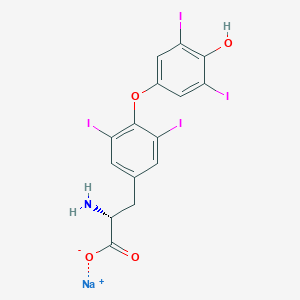-
Categories
-
Pharmaceutical Intermediates
-
Active Pharmaceutical Ingredients
-
Food Additives
- Industrial Coatings
- Agrochemicals
- Dyes and Pigments
- Surfactant
- Flavors and Fragrances
- Chemical Reagents
- Catalyst and Auxiliary
- Natural Products
- Inorganic Chemistry
-
Organic Chemistry
-
Biochemical Engineering
- Analytical Chemistry
- Cosmetic Ingredient
-
Pharmaceutical Intermediates
Promotion
ECHEMI Mall
Wholesale
Weekly Price
Exhibition
News
-
Trade Service
Original title: Bread for a long time, why harden?
you find that freshly baked bread tastes soft and delicious, but when left cold for a while, it hardens and tastes rough. In addition to bread, the same is true of rice. The reason for their poor taste is the aging of starch.
is a carbohydrate with two molecular structures: straight-chain starch and branch-chain starch. Raw starch is heated in water until the beam structure collapses, the starch molecules form a single molecule, and are surrounded by water and become a solution state. Because starch molecules are chained or even branched, involving each other, the result is a sticky paste solution, a phenomenon known as paste. Pasteized starches are more receptive to amylase and glycase, which produce glucose that is easily absorbed by the body and converted into the heat needed by the body. Therefore, rice is cooked into rice, wheat flour is made into noodles, bread, bread and other food, which contains starch can be more easily absorbed and used by the human body.
meters of food or pasta food after cooling, the pasteed starch molecules, each other will be regularly automatically directed arrangement, thus forming a hard texture crystallization. Its starch molecules are arranged neatly, water content is also less, such a state is starch aging.
process of starch aging is simple, but the principle is not simple.
In starch grains, starch molecules are arranged very closely with each other, and they form extremely dense hydrophobic particles (microcrystalline beams) between hydroxyl bonds, a state of starch known as beta-starch (paste starch). Beta-starch (raw starch) and enzymes do not react easily, making it difficult to digest. When starch particles are heated together with water, the hydrogen bonds between starch molecules are destroyed, and the starch molecules react with water to become paste-like at temperatures of 60 to 70 degrees Celsius, a condition in which starch is called alpha-starch. At this point, the original structure of the particles contained in alpha-starch disappears, and enzymes tend to act easily and become easy to digest.
At higher temperatures, alpha-starch is stable, but if the temperature is below 30 degrees Celsius, or nears this temperature, the hydrogen bonds between starch molecules will return to a stable state, starch molecules are combined with each other again through hydrogen bonds, and the molecules are gradually arranged in close order. At the same time, the original water content is gradually squeezed out and reduced, alpha-starch has returned to a partial beta-starch state, which is the principle of starch aging.
aging starch viscosity is reduced, so that food from soft to hard, poor taste. And because of the aging of starch, its hydrolytic effect with enzymes is hindered, resulting in its digestion rate is also reduced, difficult to be absorbed by the body.
, it is necessary to prevent starch aging. When the starch content is 30% to 60% and the temperature is 2 to 4 degrees Celsius, it is very easy to age. The most common way to prevent starch aging is dehydration and drying, such as convenient rice, instant noodles, biscuits and puffed food. In addition, starch food preservation is best to avoid 0 to 10 degrees Celsius this temperature range, frozen food to take a frozen method, thawing is best also choose to quickly thaw heating, so that as soon as possible through the temperature zone prone to aging.
generally speaking, food processing and cooking should avoid pasty starch aging, but make good use of its principles, can also "decay into magic." In some special cases, such as fans, powder, lobster slices and other food processing, because these foods only after aging will have a strong toughness, heating is not easy to break, taste strong, so in the production process, the need for aging treatment.
.







